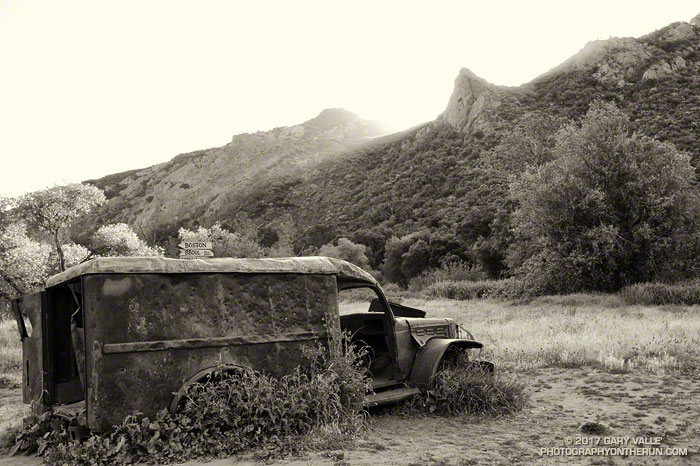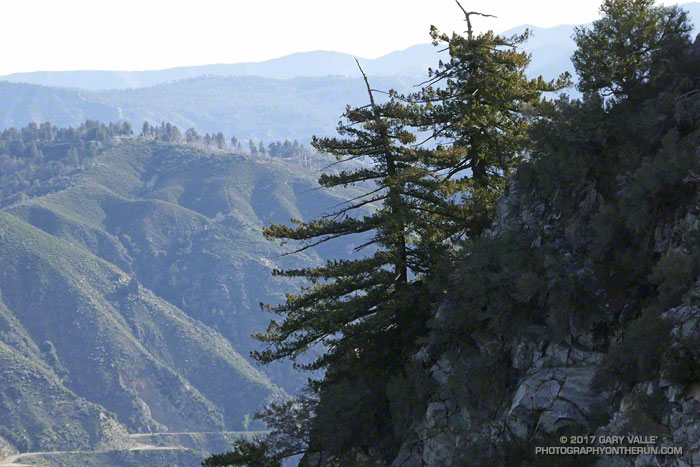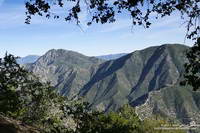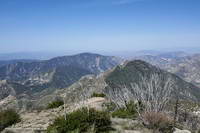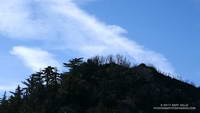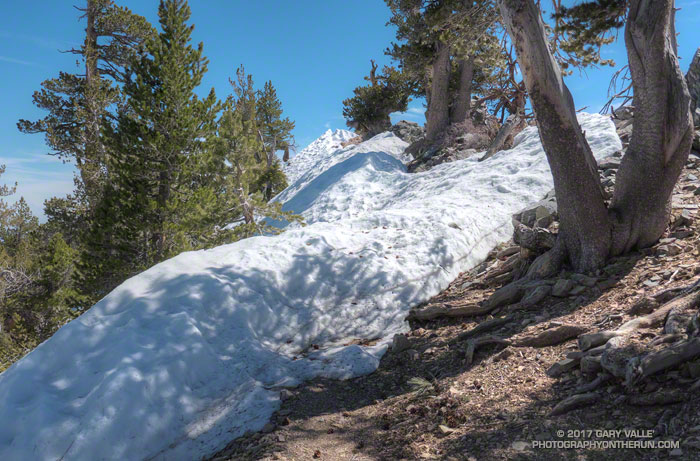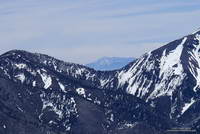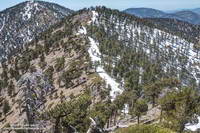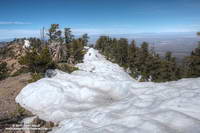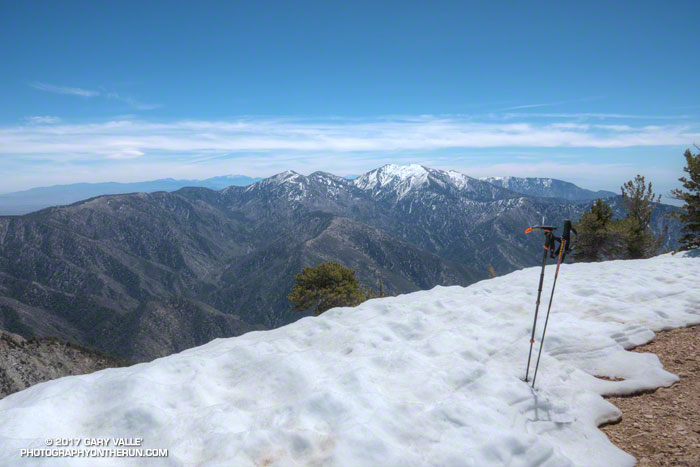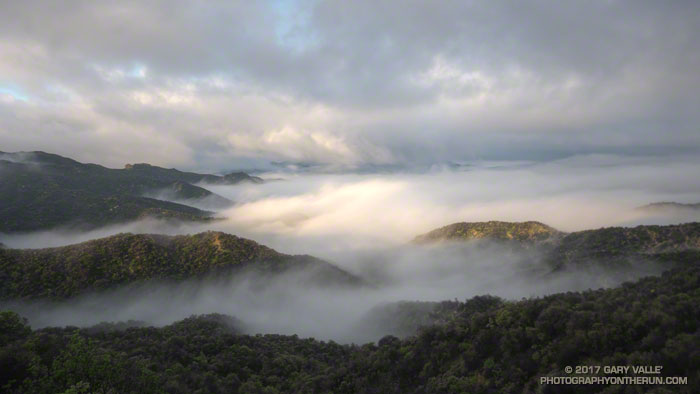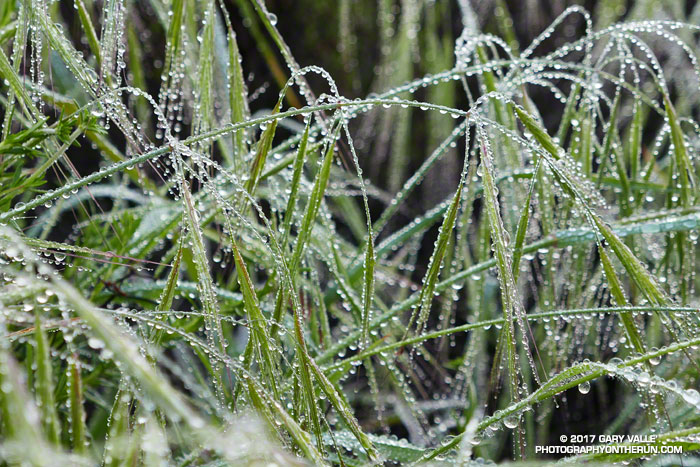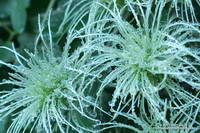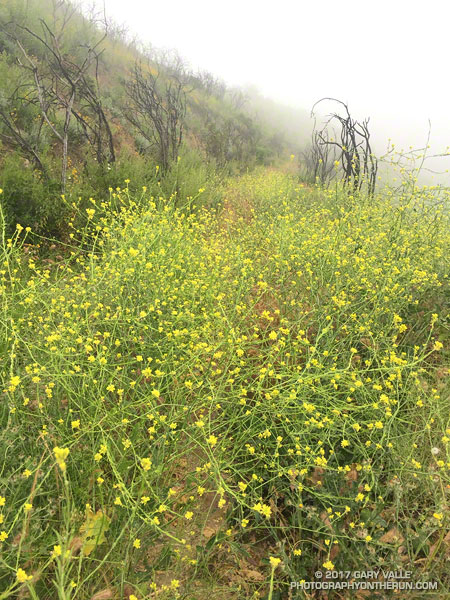
I was covered with bright yellow mustard petals and soaked from head to toe. It had been raining, and I’d just wrestled my way through another tangle of 10 foot high mustard plants. On some parts of the Old Boney Trail the mustard was so thick it was almost impenetrable. The pestilent species becomes especially prolific in wet years, growing rapidly and overwhelming native species and habitats.
After turning onto the Serrano Valley Trail and climbing up to the overlook of Serrano Valley the trail wasn’t quite so overgrown — at least I could run. In the grasslands below the greens of the rainy season were gone, replaced with the straw-colored hues of dried grass gone to seed.
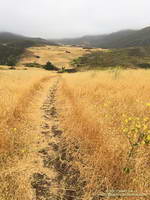
Like mustard, foxtails are bad this year. In recent weeks I’ve picked a multitude of the barbed grass seeds from my socks and shoes. Today, I’d worn ankle gaiters hoping to ward off the expected seed-storm in Serrano Valley. The seed-storm turned out to be more of a seed-shower, but the gaiters did help.
Part way through Serrano Valley I happened on a hiker, coming up from Serrano Canyon. We said hi to each other and then after he passed, he turned around and dramatically exclaimed “Don’t go down Serrano Canyon!!”
What?? Were there ogres down there? He’d obviously made it through the canyon OK. All limbs were intact and I didn’t see any cuts or bruises. I quickly ran through the possibilities and rejected most of them. One possibility that seemed plausible was that the trail had been washed out.
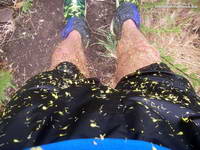
One of the reasons I was doing this run was to see how Serrano Canyon had fared during the February 17 atmospheric river event. I’d seen the damage caused by high flows in Blue Canyon and Upper Sycamore Canyon. This was the first chance I’d had to investigate Serrano Canyon since the flooding, so the hiker’s warning had the opposite of its intended effect — it just made me more curious about what was going on in the canyon.
All the way down the canyon I kept an eye out for X-Files monstrosities, but saw none. Serrano Canyon did not appear to have had as severe flooding as Blue Canyon and Upper Sycamore Canyon. Some sections of the trail were very overgrown and a short section of the trail was partially washed away, but with care and a bit of mustard-whacking the trail was passable.
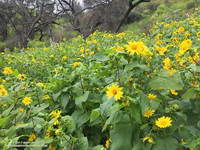
I’d had my fill of mustard and was happy to reach the dirt road in Big Sycamore Canyon. I returned up canyon using a combination of Big Sycamore Canyon Road and the Two Foxes Trail. This was much more straightforward than Old Boney and it took only about an hour to reach the Upper Sycamore Trail.
The work done on the Upper Sycamore Trail by the Santa Monica Mountains Trail Council during Trail Days was impressive. Several sections of the trail were washed away by the February 17 atmospheric river event and all have been restored.

